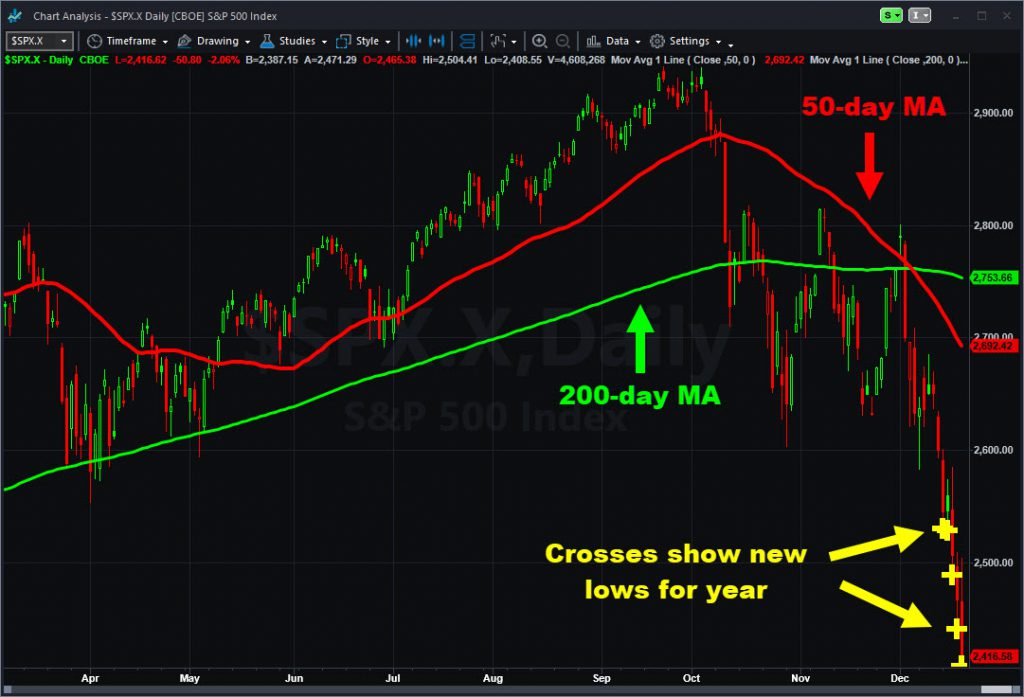Stocks just finished their worst week in seven years as investors sold everything that wasn’t nailed down.
All the major sectors declined at least 5 percent. Energy cratered 10 percent, small caps slid 9 percent and Technology dropped 8 percent. The S&P 500’s 6.6 percent shellacking between Friday, December 14, and Friday, December 21, represented worst week since July 2011.
A combination of bad news, hideous technicals and dismal sentiment lay behind the selloff. The Federal Reserve remained more hawkish than some investors had hoped. President Trump threatened a government shutdown and the UK careened toward a Brexit abyss. There were also few signs of the trade impasse with China improving. If anything, they might be worse as allegations of business espionage surfaced.
There were other reasons for the poor sentiment. “Window dressing” and tax-loss selling near the end of the year propelled the downside. There’s also been a sense of businesses conditions worsening — even if the economy stays out of recession. Higher costs and worker shortages are big factors, but there are others.

Just look at Perrigo (PRGO), last week’s biggest loser in the S&P 500. The drug maker crashed 35 percent on news it may owe nearly $2 billion to the Irish government. This had nothing to do with the economy, but resulted from problems with an accounting strategy used by several companies early this decade. (Remember “tax inversions?”)
ConAgra (CAG) was the second worst with a 26 percent drop. Again, the economy wasn’t the culprit, but trouble with a big acquisition. Click here for more on the uncanny spike of bad news sweeping corporate America.
Meanwhile, only six companies in the entire S&P 500 rose last week. General Mills (GIS) led the gainers, inching up 3.8 percent on strong quarterly profit.
Getting back to the broader market consider some of these facts:
- The Nasdaq-100 plunged 8.3 percent last week, its biggest drop since October 2008.
- The Dow Jones Industrial Average fell 6.9 percent, its worst week since October 2008.
- The S&P 500 has lost 17 percent of its value since the end of September. That puts it on pace for the worst quarterly showing since the last three months of 2008.
- Only 14 percent of the S&P 500’s members are over their 200-day moving averages, the lowest proportion since August 2011.
Don’t forget about crude oil (@CL). Do you know black gold slid 11.8 percent, its reddest week since May 2011? Inventories and production remain high as demand slows.
Aside from energy, last week’s worst-performing groups included biotechnology, Chinese Internet stocks, semiconductors and retailers. Gold miners were the only industry to move higher.
This week is shortened by the Christmas holiday tomorrow, with a half-day today.
Thursday has a handful of economic reports like initial jobless claims, consumer confidence, oil inventories and new home sales. Pending-home sales are Friday, and no earnings are scheduled.

























